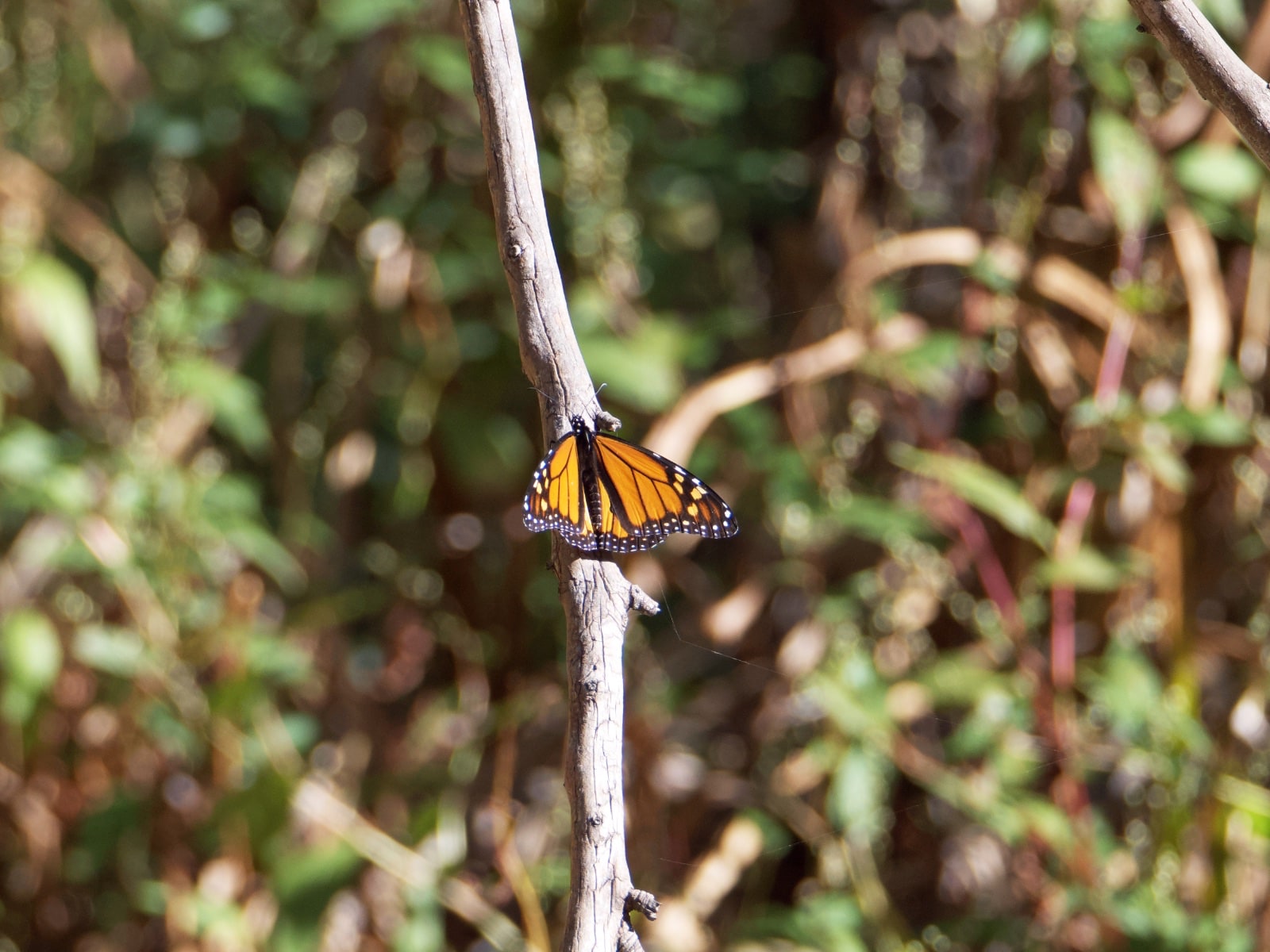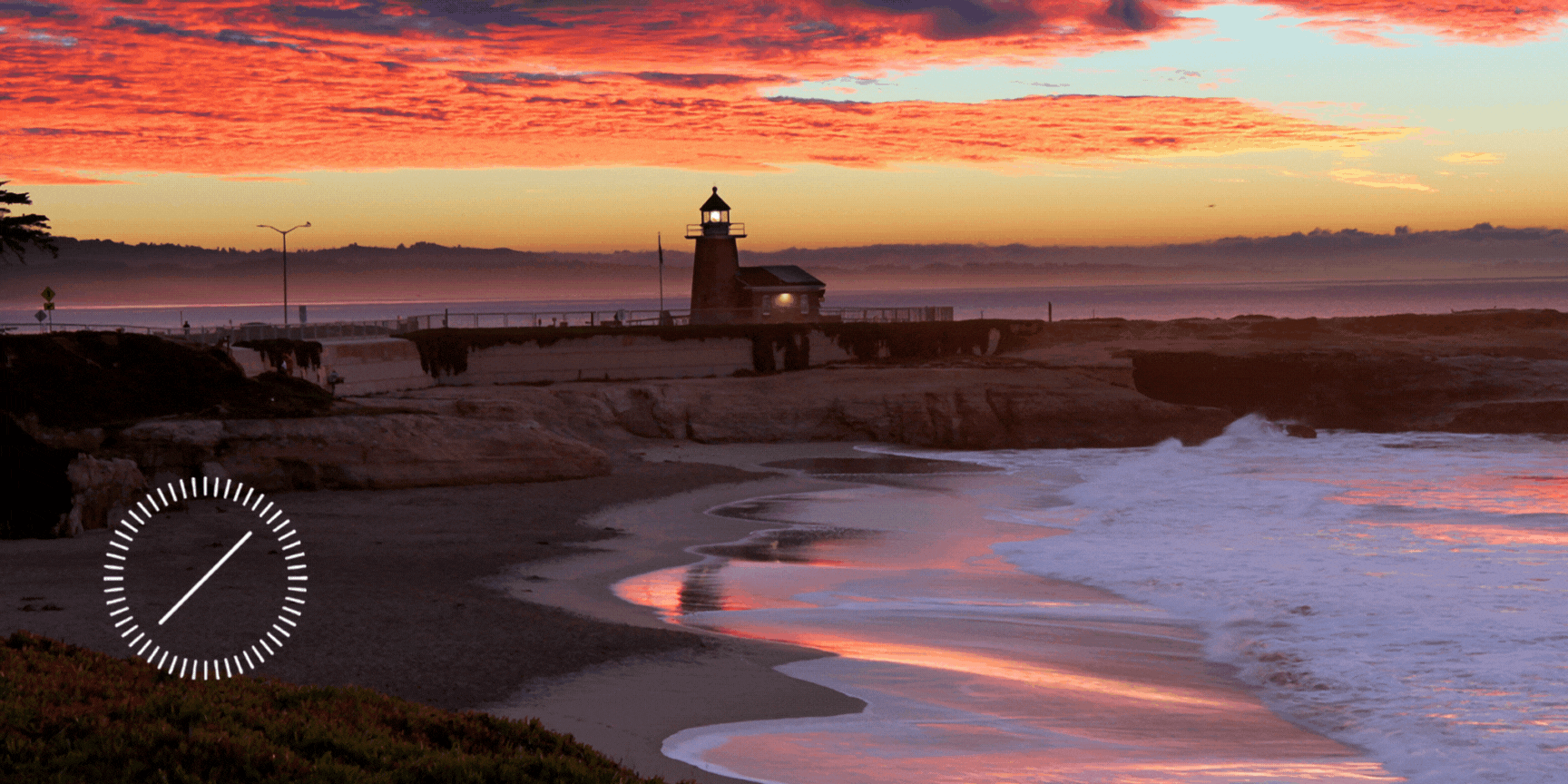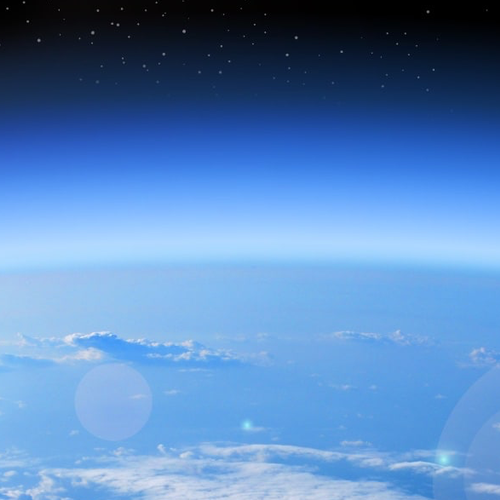Every winter, Santa Cruz becomes a bustling hub for one of nature’s most enchanting spectacles: the migration of Monarch butterflies. This captivating event draws both residents and tourists alike, eager to witness the mesmerizing dance of these black and orange beauties as they take temporary refuge in the city’s eucalyptus groves.
Monarch butterflies, scientifically known as Danaus plexippus, are tropical creatures that cannot survive in freezing conditions at any stage of their life cycle, be it egg, caterpillar, chrysalis, or butterfly. Hence, as the colder climates set in, they embark on a remarkable journey, migrating south to regions with more moderate weather.
Santa Cruz is privileged to be one of these warm havens, particularly the Natural Bridges State Beach, the only State Monarch Preserve in California. Beginning in early to mid-October, the butterflies start arriving in droves, creating a vibrant tableau against the backdrop of the eucalyptus grove.
Fun Fact: Monarch butterflies can travel up to 100 miles a day during their migration, making it one of the most remarkable journeys in the animal kingdom.
Why Santa Cruz
The question that often arises is why do these butterflies choose the same eucalyptus grove at Natural Bridges as their temporary home? Well, the answer lies in the unique features of this habitat.
Location and Shelter
Primarily, the grove is located in a canyon, providing the butterflies with much-needed shelter from the wind. This strategic positioning is crucial for the delicate creatures to prevent them from being blown away.
Sunlight and Temperature Regulation
Secondly, the eucalyptus trees filter in sunlight, keeping the butterflies warm and preventing them from freezing. As creatures that cannot withstand cold temperatures, this is a critical survival mechanism for the monarchs during the winter months.
Food Source
Lastly, the eucalyptus trees bloom in the winter, providing a convenient food source for the butterflies. The nectar from these flowers is essential for the butterflies to power their long journey and maintain their energy levels while overwintering.
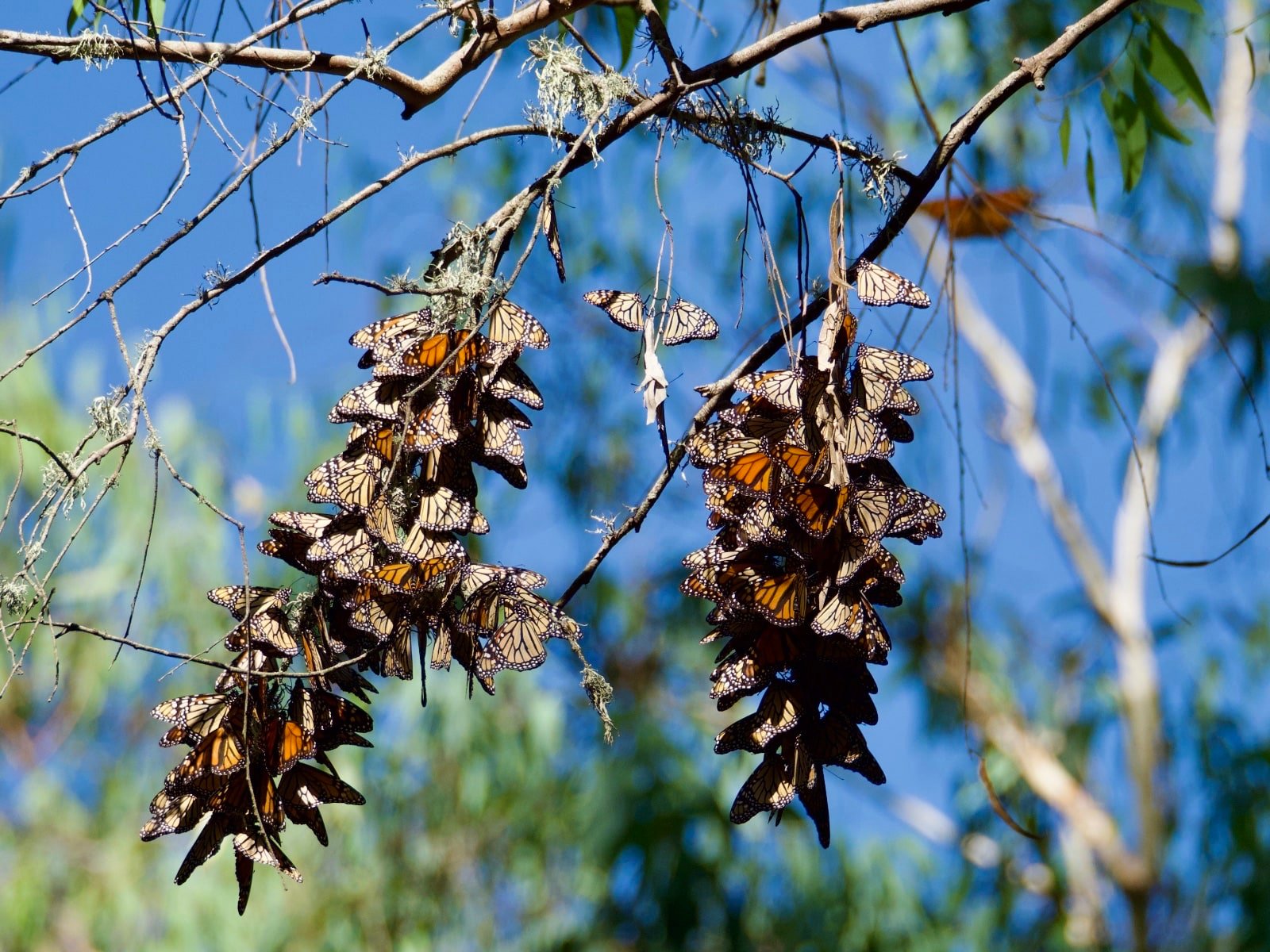
Santa Cruz Monarch Butterfly Cluster
The Timeline of Monarch Migration in Santa Cruz
According to Docent Naturalists, monarchs usually arrive at Natural Bridges around mid-October. Their numbers peak in late-November and early-December, offering the most visually stunning spectacle for visitors. By mid to late-January, and sometimes extending into February, the monarchs begin their departure, marking the end of the overwintering season.
The Monarch Grove Trail at Natural Bridges is open for self-guided tours during park hours (8am to sunset.) For visitors seeking guidance, volunteers are often available in the grove to answer questions and help locate the butterfly clusters.
Travel Tip: The minimum temperature a monarch needs to fly is 55 degrees. If it’s colder than that, you might see monarch clusters hanging like leaves off the eucalyptus trees, which is also a sight to behold. But remember, when clustered, they can be easily overlooked. So, keep your eyes peeled!
The Plight of the Monarch Butterflies
As much as we celebrate the return of the monarchs, we must also acknowledge the challenges they face. The numbers of these beautiful creatures have been dwindling due to factors like loss of natural habitat and the use of pesticides and insecticides.
Role of Butterfly Gardening
One way to help conserve the monarch population is through butterfly gardening. This involves planting nectar sources such as marigolds, cosmos, and asters, grown organically to provide a safe food source for the butterflies.
Milkweed planting is also crucial for monarch survival. It’s the only plant on which the female monarch will lay her eggs, and the larvae will feed on. Moreover, milkweed contains toxins that protect the monarch caterpillar from predators.
However, planting milkweed should be done correctly. According to Natural Bridges naturalists and the Xerces Society, it’s best to plant milkweed 5 or more miles away from the coastline in the Central Coast area.
For more information on how you can aid the monarchs in their recovery, you can check the Xerces Society website.
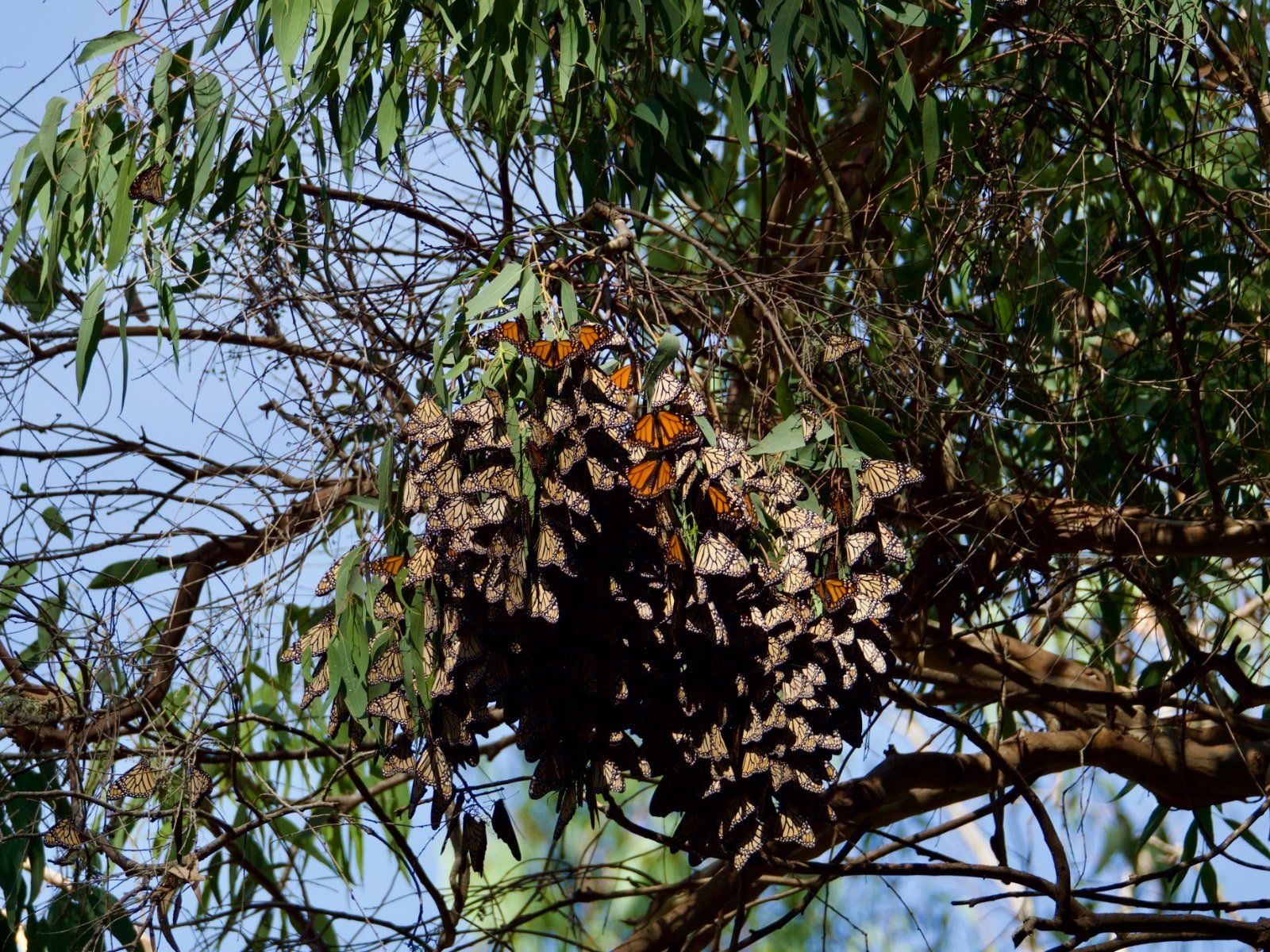
Santa Cruz Monarch Butterfly Cluster
Beyond Monarchs: Other Wildlife Mascots in Santa Cruz
Monarchs aren’t the only migratory wildlife mascots in Santa Cruz. Natural Bridges State Beach is also home to horned owls. These majestic creatures have been nesting in the eucalyptus grove for several years, and sightings have been high this season. If you’re looking to spot the horned owls, check with a Natural Bridges interpreter or docent, and they can guide you. You can also visit the nearby Santa Cruz Wharf to see watch the sea lions.
Bonus Tip: The Natural Bridges State Beach isn’t just about butterflies and owls. It’s also a great place to explore tide pools and observe fascinating sea life in their natural habitat. But always remember to be cautious near the water.
Other Monarch Viewing Locations in Santa Cruz
While Natural Bridges State Beach is the primary monarch haven, others spots in Santa Cruz also witness the butterfly influx. One such location is Lighthouse Field, just two miles south of Natural Bridges on West Cliff Drive. This large field across from the Surfing Museum/Lighthouse Field State Beach offers another chance to observe these seasonal guests.
The Annual Welcome Back Monarchs Day Event
If you’re eager for the monarch season, don’t miss the annual Welcome Back Monarchs Day event. This family-friendly day is filled with music, arts and crafts, information booths, and even hand-cranked ‘Monarch’ ice cream (pumpkin flavor, of course!) It’s a great opportunity to learn more about monarch butterflies and how to create a butterfly garden.
Observing Monarch Butterflies: Some Practical Tips
When visiting the Santa Cruz sanctuary, keep in mind that the best time to observe monarch butterflies is from late October to January. To see them in flight, ensure the weather is above 55°F.
The Natural Bridges State Beach Visitor Center offers guided tours throughout the butterfly migration season. These tours provide insights into the life cycle, habitat, migration, and conservation of monarch butterflies.
Practical Tip: If you’re planning a visit, remember to bring binoculars to see butterfly clusters high up in trees. Also, avoid touching the butterflies, especially if they’ve fallen on the ground. Always stay on the paths and refrain from disturbing butterfly clusters in the trees.
Conclusion
The annual migration of monarch butterflies to Santa Cruz is an enchanting natural spectacle that leaves visitors in awe. The sight of thousands of these delicate creatures clustering on eucalyptus trees is a testament to the wonders of nature and a reminder of the critical role we play in their conservation. So, the next time you’re in Santa Cruz during the monarch season, be sure to experience this magical phenomenon and help in any way you can to ensure their continued survival.
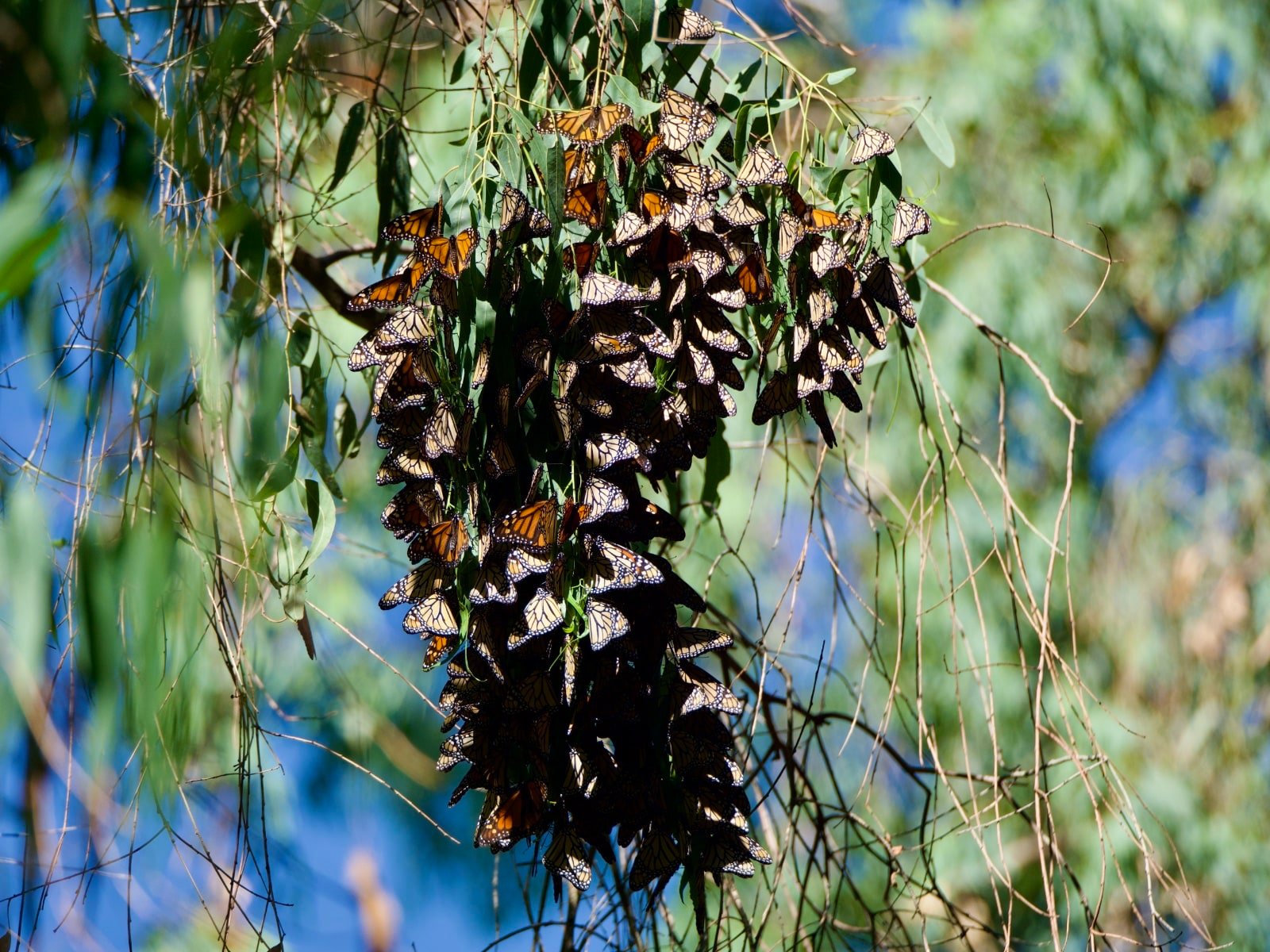
Santa Cruz Monarch Butterly Cluster
